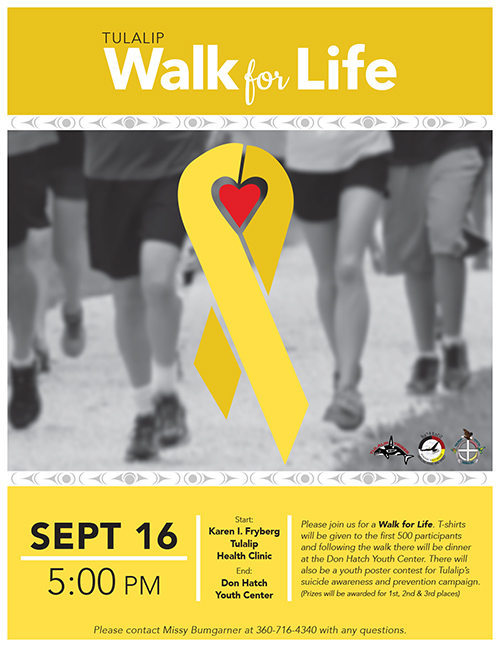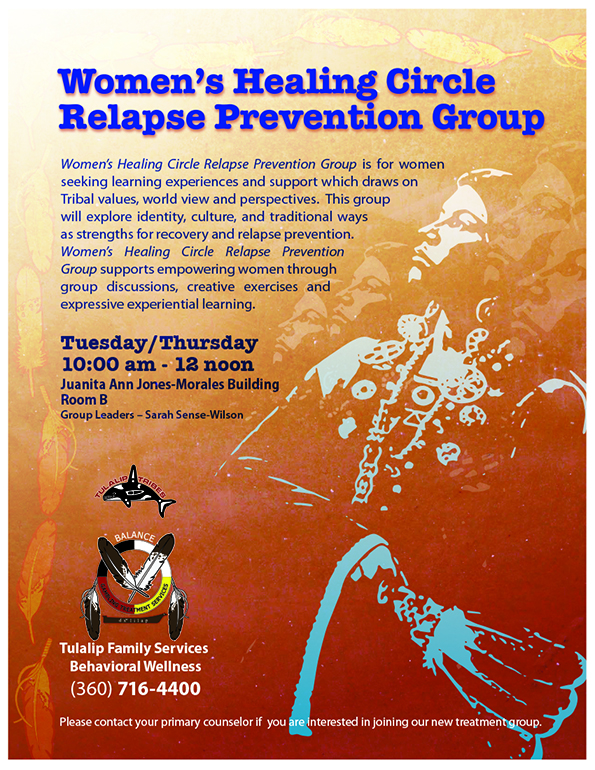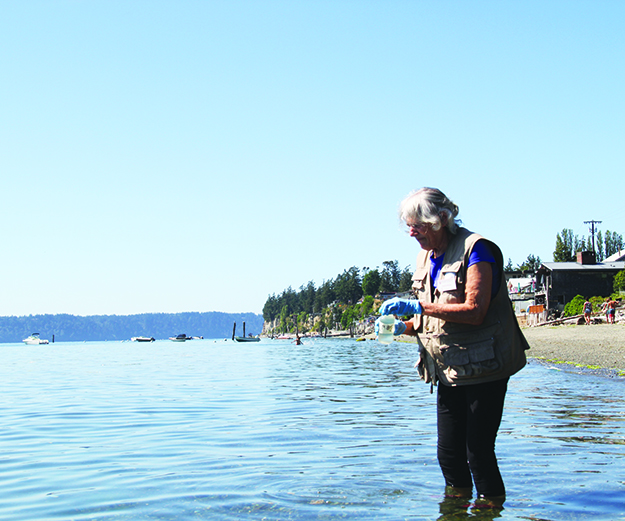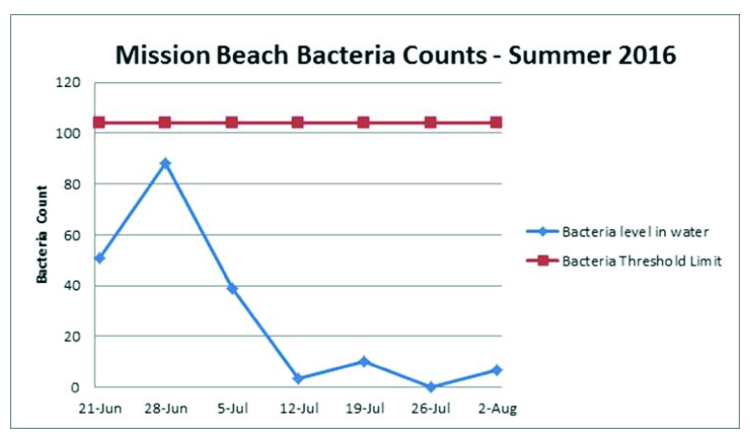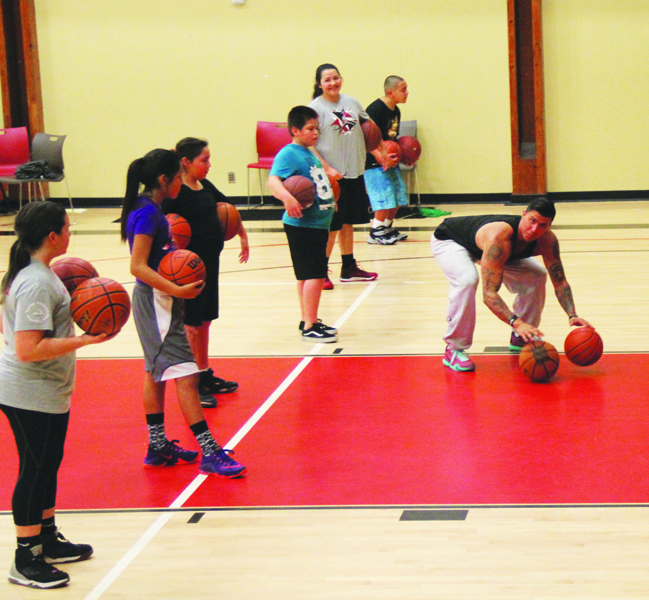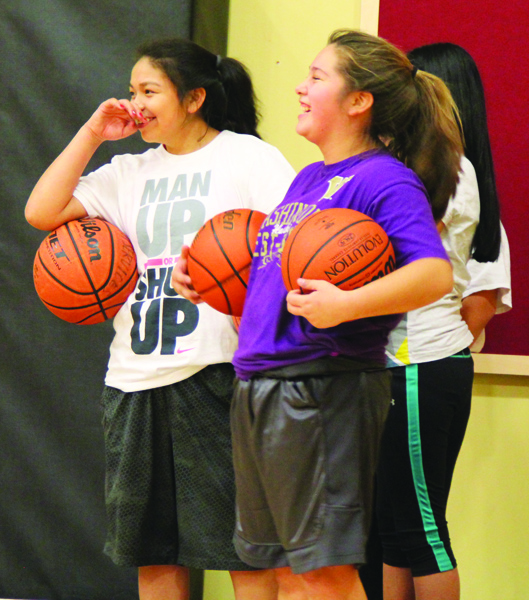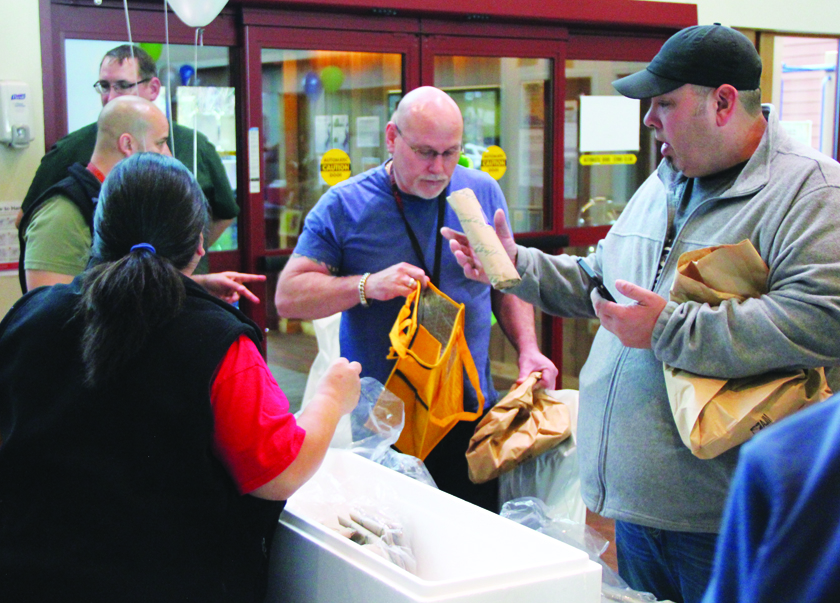Tulalip Walk For Life, September 16 at 5:00 p.m. Walk begins at the Karen I Fryberg Health Clinic and finishes at the Don Hatch Youth Center
Tag: Health
Women’s Healing Circle Relapse Prevention Group
by Sarah Sense-Wilson
The Tulalip Tribes Family Services Women’s Healing Circle –Relapse Prevention Treatment Group, is a cultural based approach to supporting Native women in their efforts to address relapse prevention within the context of community, family and individual. The Women’s Healing Circle meets twice a week (10:00am-12noon) Tuesdays/Thursdays for 6 weeks at TFS. We include Native perspective, worldview and culture specific exercises and activities which build on strengths, and supports a holistic approach for wellness and health. Our Women’s Healing Circle group is designed to incorporate traditional universal Native values and beliefs for enhancing identity and fostering healthy relationships. You must be enrolled in TFS chemical dependency treatment program for participation in Women’s Healing Circle group. Please contact TFS for more information at 360-716-4400
Mission Beach Water Monitoring – Summer 2016
By Kalvin Valdillez, Tulalip News
With the assistance of WSU Beach Watchers volunteers, the quality of water at Mission Beach is being monitored weekly. So far this summer, the water has been sampled seven times. Samples are analyzed at the Tulalip Water Quality Lab.
From Valerie Streeter, Stormwater Planner in Tulalip Natural Resources:
“This year is the first time Tulalip Natural Resources with WSU Beach Watcher Volunteers have monitored the water at Mission Beach for safe swimming conditions so we weren’t sure what we would find. It’s great to see that beach water is clean so far! The weekly water monitoring will continue until August 30.”
The results show that bacteria levels in the water are below the threshold limit for swimming, which means that the water is clean. The graph below shows the average result from the three beach sampling stations. The red line shows the bacteria threshold limit and the blue line is the water quality data.
With the good news of Mission Beach having clean water with safe swimming conditions, be sure you make a trip before summer is over.
Healthy Hearts, Healthy Minds
By Micheal Rios, Tulalip News
Amongst Native peoples, few things in life are as scary as diabetes. And then, after being clinically diagnosed with diabetes, a person must take many steps to resume a normal life, and in most cases, a more healthy lifestyle. What can be just as surprising as the diabetes itself are the unexpected, nonphysical effects, which are equally threatening to one’s quality of life. Although these effects might make the road to diabetes management somewhat bumpy, experts from the Healthy Hearts team from the University of Washington’s Indigenous Wellness Research Institute are demonstrating that life with diabetes not only goes on, but can get better.
The Healthy Hearts team has been working to understand and address cardiovascular disease in the Tulalip community since 2008. The first study, Healthy Hearts Across Generations, collected surveys from 284 randomly selected participants from the Tulalip tribal membership to examine cardiovascular disease risks and look at what coping strategies were most productive. From 2010 to 2012, Healthy Hearts Across Generations also provided 135 community parents and guardians with culturally influenced classes to promote health in their families.
In 2012, planning began for the second Healthy Hearts study called Healthy Hearts, Healthy Minds. This was launched in 2013 for Natives in the Tulalip area whose diabetes/prediabetes put them at greater risk for heart disease. Healthy Hearts, Healthy Minds provided those who were eligible and wanted to participate with one-on-one wellness counseling to take control of their diabetes self-care. This study came to a close in late February.
Local community resources and input from tribal members were used to develop study materials and programs, which were culturally-adapted and designed to promote sticking with positive, healthy behaviors even when it can be tough in the face of busy schedules and other challenges.
Just as exercise strengthens the mind as well as the body, awareness and education play an important role in nonphysical healing. Optimal diabetes management is more likely when people understand the nature and persistence of diabetes, and the fact that it is treatable. It’s more than just sharing facts; people also must be taught how to return to healthier lifestyles and avoid the habits that likely contributed to their health issues in the first place. This is yet another way in which wellness counselors are beneficial, providing an evidence-based intervention strategy to help participants succeed with diabetes management.
“Our focus was the wellness mental state. With diabetes, one of the challenges is that you are asked to do so many things to take care of it yourself. You have to change how you eat, you have to exercise, and check your blood sugar, you have to take your medicine, and don’t forget about getting your eyes and feet checked. It becomes very overwhelming for people,” says Rachelle McCarty, Project Manager of Healthy Hearts, Healthy Minds. “If you are really stressed out, then it’s hard to take care of yourself. That’s where our program aimed to help out. We provided participants with one-on-one coaching and very useful tools and information, so they could minimize their stress level to better manage their diabetes.”
Participants were asked to meet with a wellness coach for 10 sessions over a three-month period. Throughout the sessions, participants worked with their wellness coach to identify individual goals they wished to focus on regarding their pre-diabetes or diabetes and stress. They also worked with their coach to complete the Healthy Hearts, Healthy Minds curriculums, which covered a range of topics and skills like problem-solving, adherence, motivation and relaxation training.
Wellness coach Michelle Tiedeman, who has been with Healthy Hearts since 2009, says “What I enjoyed the most was working one-on-one with individuals and seeing them make one small, positive change at a time that added up to better overall wellness. It has been an honor to work with the Tulalip community the past several years. I have had the pleasure to work with some amazing individuals and see them accomplish great things.”
Healthy Hearts sponsored an informational lunch to share results from Healthy Hearts Across Generations in August 2014, and hosted a community celebration on February 2, 2016 to honor Tulalip’s commitment to health and share results from Healthy Hearts, Healthy Minds. You may have also seen them giving out results flyers and booklets at public events, health fairs, and the semi-annual General Council meeting last year.
Here is a sample of some of the findings:
- 42% of tribal members who responded to the health survey said they do participate in traditional activities like culture night, canoe journey, salmon ceremony, talking circles, and others.
- 40% of tribal members who responded to the health survey reported that they had high blood pressure, 50% of the men and 32% of the women.
- 27% of parents reported that they often use their own behavior as an example to encourage their child(ren) to be physically active.
- 77% shared that they have one or more blood (biological) relatives with diabetes.
- Those who enrolled in Healthy Hearts, Healthy Minds significantly lowered their depressive symptoms.
- Healthy Heart, Healthy Minds participants rated themselves significantly better at sticking with their goals at the end of the program compared to the beginning.
- 70% agreed with the statement, “I have a responsibility to walk in a good way for future generations.”
For help with your diabetes, contact the Diabetes Care and Preventions Program at 360-716-5642. For more information on the projects or results available to date, email the Healthy Hearts, Healthy Minds study at iwri@uw.edu. The projects were funded by the National Heart, Lung and Blood Institute, and the National Institute on Minority Health and Health Disparities.
Contact Micheal Rios, mrios@tulaliptribes-nsn.gov
Life is the best gift of all
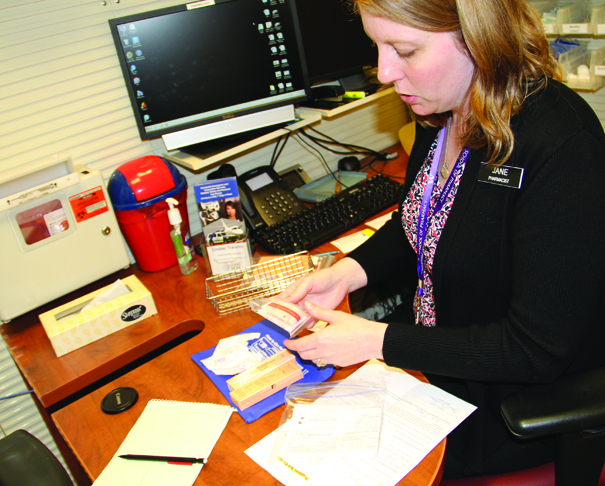
Photo/Niki Cleary
by Niki Cleary, Tulalip News
It’s the time of year that we gather together with our family, reminisce about favorite memories and create new ones. While the holidays are a time of love and generosity, for those down on their luck they can be a painful reminder of better times. Holidays can also bring the added stress of creating the perfect holiday experience (usually accompanied by consumer debt) and they can heighten emotions grief and loss. Many cope with the stress and pain by leaning on prescription drugs or opiates.
Too often deaths in our community are a result of drug overdose. According to a report released early this year, one out of every five heroin deaths in the State occurred in Snohomish County (you can view the report http://www.snohd.org/Records-Reports/Data-Reports). Combined with the fact that drug use spikes during the holidays, chances are someone you know may be in danger of opiate overdose this season.
Other than abstinence, there’s no surefire way to prevent overdose, and the stigma surrounding addiction often prevents people from being willing to even discuss the possibility of a family member’s use or potential overuse of drugs. Tulalip citizen Rico Madison lost his mother to an opiate overdose; the experience has made him passionate about changing the culture of hiding drug addiction.
“I do this because everybody has someone close to them,” he said. “Everyone has been in a situation where they rejected someone who asked for help, or someone they wish they could have helped.”
One of the primary tools to offset the harm of drug addiction is Narcan, also known as Naloxone.
“Narcan is a way to help without enabling,” Rico continued. “It’s like a fire extinguisher, it can’t hurt, it can only help.”
Rico campaigns constantly to encourage everyone to purchase a Narcan kit. Most insurances will cover at least part of the cost.
The simple explanation of a deadly opiate overdose is that the effects of opiates cause your brain to shut down the normally automatic impulse to breathe. Without oxygen to the body, the heart stops and brain damage and death follow. Narcan is a narcotic antagonist; it blocks opiate receptors, which can temporarily halt the effects of the opiate.
Tulalip Pharmacist Jane Jacobson explained, “This is not a fix, it’s a last resort. A dose will wear off in 30-90 minutes, so you still need to call 911, because when it wears off the patient will be back into overdose.”
She described the ‘look’ of an opiate overdose, “They may look like they’re sleeping. They may be breathing very slowly. They may breathe in a long, slow gasp, followed by a long pause. They may have blue or gray lips or may be unresponsive. When a person is only breathing 5-10 breaths a minute, you are looking at brain damage.
“If you even think someone may be overdosing on opiates administer Narcan immediately,” she instructed. “It only works on opiates, if someone is overdosing on something else, this won’t hurt them. There are two doses in your kit. If there’s no effect within two to three minutes, use the other syringe, start rescue breaths and call 911.”
Due to Rico’s activism, Tulalip enacted the Lois Luella Jones Good Samaritan Law, a law that offers limited exemption from prosecution if a person calls 911 for help with an overdose.
“With the Good Samaritan Law you will not be arrested for drug paraphernalia, underage drinking, or non-violent misdemeanors,” explained Jane. “Sometimes addicts want to help, but they don’t call 911 because they’re afraid they will be arrested.”
Narcan kits are available at the Tulalip Pharmacy. Tulalip employee insurance covers the cost with only $8.00 co-pay, and Washington’s Applecare covers the kits at 100%. For the uninsured, the kits cost $105 for non-Tulalips and $65 for Tulalip citizens.
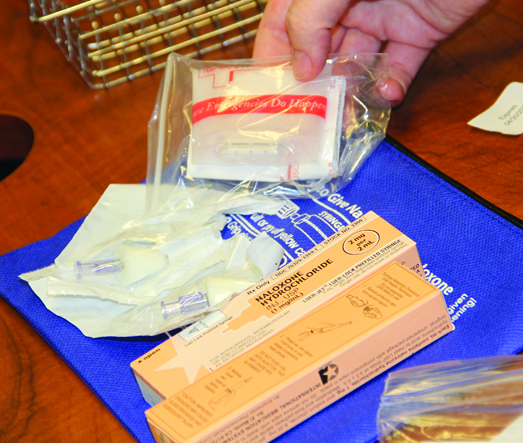
Photo/Niki Cleary
“We have a lot of kits in stock, made up and ready to go,” said Jane. She pointed out that the kits, while generally sought after by families and friends of those suffering addiction, are useful for many populations.
“We also recommend people on chronic pain management medications have kits on hand as well,” she said. “Hopefully you won’t need it, but it’s here if you do. It’s better to have a kit just in case than be in a situation where you could have used it and saw a friend or family member pass away when you could have gotten something to save them.”
If you have a kit and use one dose, replace it even though there’s another dose still in the kit.
“You always want the second dose,” said Jane, reminding that sometimes a single dose isn’t enough to halt the overdose. Each kit comes with a pharmacist’s consultation and purchasers watch a video to explain how to use it. Narcan is prescribed as a four-day supply, so a client can pick up a new kit every four days if they choose.
“If people want to come in and get kits as a family, we can do that too,” said Jane.
“I don’t want to go to another funeral because of overdose,” said Rico. “I want people to understand that it’s easy, it’s the difference between life and death and it only takes 20 minutes.”
A fire extinguisher, a life preserver, a first aid/CPR class; we don’t think twice about most tools designed to save lives. If you can learn something or buy something and save someone’s life, it’s a no-brainer, right? Narcan is no different. This holiday season, while you’re shopping and heading to and from dinners and holiday parties, please think about scheduling a trip to the Tulalip Pharmacy to pick up a Narcan kit. It may be that the greatest gift you give this year, is saving someone’s life.
Using sports to inspire lifelong fitness

Photo/Micheal Rios
By Micheal Rios, Tulalip News
Dietreich Rios, Suquamish tribal member and owner/operator of Dietreich Fitness in Orlando, Florida, hosted a Native youth basketball camp and fitness clinic at the Donald Hatch Jr. gymnasium, November 23-25. The 3-day health expo was all about health and fitness, while promoting a tobacco-free lifestyle.
““I’ve trained a lot of athletes, from professional basketball players to body builders, but my passion is motivating and helping our Native peoples stay healthy and strong individuals,” says Dietreich while in the midst of a stretching routine he does before day one of the basketball clinic. “Over the past couple years I’ve become more involved in not only the fitness community, but in Native American health across the nation.
“I try my best to reach and help inspire, motivate, and teach as many people as I can. I preach fitness and basketball since that’s what I grew up doing; playing basketball was all I did as a kid then as I got older I got heavily into fitness. I try to integrate the two whenever I can.”

Photo/Micheal Rios
Dietreich grew up in the greater Seattle area before moving to Florida to pursue dreams of opening his own fitness center. He has become a renowned personal trainer and basketball skills coach to many high school hoopers, D-1 college athletes, and has even added the likes of Glen ‘Big Baby’ Davis (an NBA player) to his clientele.
We’ve all witnessed how the health and fitness movement has grown immensely over the past several years. Currently, there are no shortage of gyms and workout areas in Marysville, and it wasn’t too long ago that the Tulalip Teen Center and Tulalip Bay Crossfit opened their doors to our reservation based community.
“Getting Natives to keep their minds and bodies healthy through fitness, exercise, and sports is a big movement right now. We’ve always had basketball, rez ball you know, but from what I’ve been seeing there is more of an emphasis on overall fitness and health within tribal communities,” explains Dietreich. “Our people are getting inspired from seeing the Nike N7 movement and by seeing famous athletes like WNBA all-star Shoni Schimmel. More Native youth are seeing people who look like them have success on the professional level, especially young girls who look up to Shoni and her sister Jude, they are motivated play basketball.”
Preaching and advocating for a healthy lifestyle that includes being active through exercise and sports is nothing new for Native Americans. Natives have always been known for their athletic ability, but in the last couple generations the numbers say that athletic skill isn’t being utilized like it once was. Obesity, diabetes, and heavy alcohol/drug use have been running rampant through our communities, making it harder and harder to find the well-conditioned Native athlete above the age of 30.
Whatever the reason may be, tribal departments and communities nationwide have ramped up their focus on engaging Native youth to stay active through sports and fitness. Get them started when they are young and the hope is they’ll continue to maintain that healthy lifestyle and be a role model to others later in their life.
“The movement is definitely growing. Through my travels I’ve seen more community fitness centers and youth athletic centers being built on reservations,” reflects Dietreich. “Now there’s a big emphasis to have a gym, to have places for our people to work out and stay fit, and to have departments getting our young ones involved in sports and fitness.”
The Tulalip Tribes Youth Services Department has been monumental in creating activities, services, and teaching fitness based curriculum to our youth. Since opening the Tulalip Teen Center, the Youth Services Department has been steadfast in reaching out and bringing motivational speakers, fitness experts, and Native celebs to engage with our youth.
Shortly after we hosted the Gary Payton Basketball Camp, Youth Services, with the help of DeShawn Joseph, learned of Dietreich and his assortment of fitness skills he uses to motivate and energize Native youth. Within the past year Dietreich has taught fitness and basketball camps on the Jamestown S’Klallam Reservation and within the Navajo Nation. He is also preparing to do some fitness camps up north for a few First Nations tribes in Canada.
Throughout the 3-Day fitness camp, Tulalip youth had conversations about how to properly workout and take care of their bodies, learned the importance of a good warmup that includes stretching as to avoid injury, and covered tobacco prevention.
“Tobacco prevention is an interesting topic to me because it should be a no brainer for all athletes, but still there are so many young athletes who choose to smoke,” asserts Dietreich. “If you are going to play sports, then you shouldn’t smoke tobacco because it’s detrimental to what you’re trying to do.”
The exercises the kids enjoyed most during the camp were undoubtedly those that called for dribbling or shooting a basketball. They were all able to participate in a multitude of basic and semi-advanced basketball skill building exercises. Each exercise is something Dietreich hopes the kids will continue to make part of their fitness routine.
Following the fitness camp, Dietreich took to Facebook to thank the Tulalip community. “In the spirit of being thankful, I want to thank the Tulalip Tribes for hosting me this week while I put on this youth basketball and fitness clinic. I had a great group of kids! Hope everyone enjoyed it as much as I did.”
Safety fair benefits kids from Boys and Girls Club
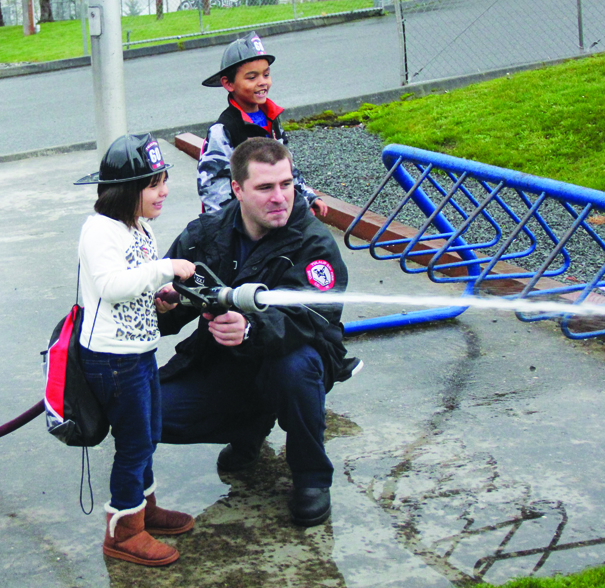
Photo/Micheal Rios, Tulalip News
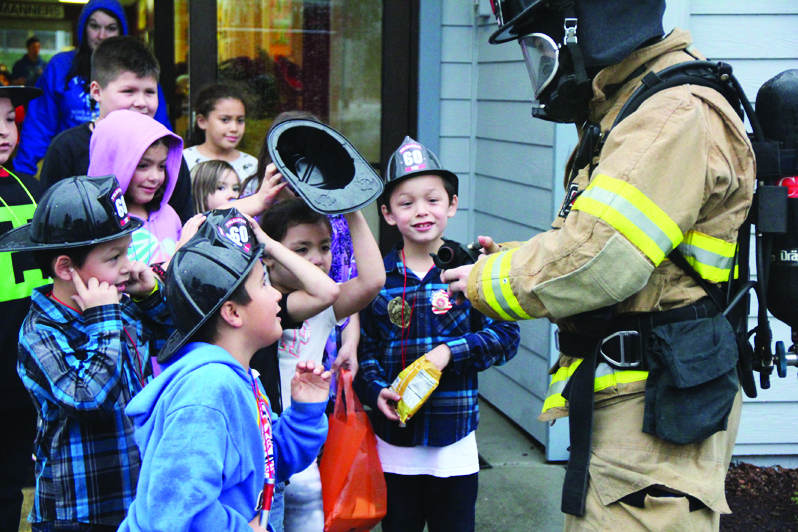
by Micheal Rios, Tulalip News
Hundreds of kids from the Tulalip Boys and Girls Club learned how to be prepared for emergencies at a health and safety fair held on Friday, November 13. The day of fun-filled, educational activities was in response to a large wind storm that knocked power out in major parts of the Tulalip Reservation only weeks ago.
The fair included services and education from various departments within the Tribes’ network, including the Health Clinic, Police Department, and Youth Services.
The theme behind this year’s safety fair was to have children and their parents prepare for emergencies with educational fun for the whole family.
The Red Cross was on hand to oversee their ‘pillowcase project’, where kids ages 3 and up receive a pillowcase to build their own personal emergency supplies kit. Kids 5 and up were taught compression CPR by a professional team who provided video tutorials and hands-on learning tools for the youth.
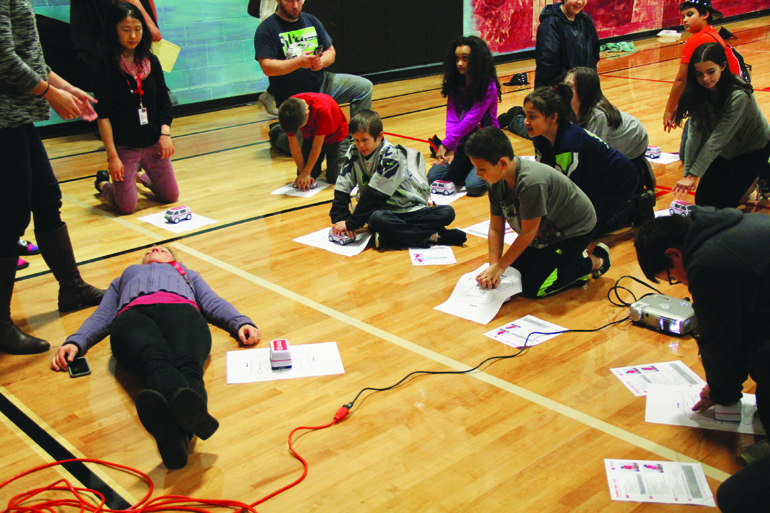
Photo/Micheal Rios, Tulalip News
Washington Poison Center representatives were on-hand with their Mr. Yuk mascot and resources. They provided information about poisonings and toxic substances to the children by way of a spin the wheel game. For each spin of the wheel, a child would be asked whether a certain item was poisonous or not if digested/inhaled, and prizes were awarded for correct answers. For incorrect answers, the Mr. Yuk representative would explain to the child how the item was poisonous and potential effects if digested/inhaled.
Highlighting the safety fair was the presence of Snohomish County Fire District 15. Children lined up by the scores to meet the firemen, sit in the firetruck and use the fire hose to blast water at safety cones.

Photo/Micheal Rios, Tulalip News
“It’s important for the kids to hear it come from people besides us,” says B&GC administrative assistant Diane Prouty on the importance of the safety fair. “We want them to hear it from the professionals, so that they know what we say is true. And that they listen when we talk to them about the different kinds of safety, whether it be bus safety or fire safety. We just want to make sure that all children in our community are safe and that they have the opportunity to learn it right here at the club.”
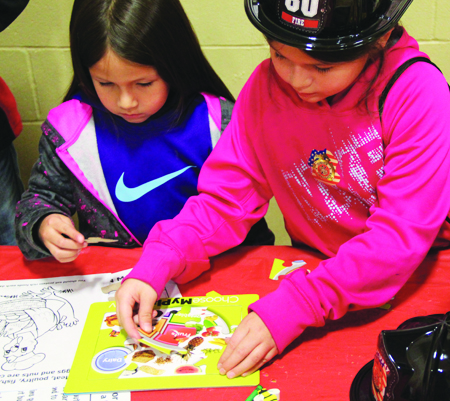
Contact Micheal Rios, mrios@tulaliptribes-nsn.gov
Taking charge of your health
By Micheal Rios, Tulalip News
Early detection is key for the treatment of heart disease, diabetes, prostate cancer, and many other diseases that disproportionately affect men. However, men are less likely to seek preventative care than women. Despite growing awareness, men usually take a back seat approach to maintaining their health. We will shy away from seeking advice, delaying possible treatment and/or waiting until symptoms become so bad we have no other option but to seek medical attention. To make matters worse, we refuse to participate in the simple and harmless pursuit of undergoing annual screenings.
Enter the Annual Men’s Health Fair held at the Karen I. Fryberg Tulalip Health Clinic on October 6. This year’s health fair provided us men the opportunity to become more aware of our own health. With various health screenings being offered for the low, low price of FREE we were able to get in the driver’s seat and take charge of our own health. Cholesterol, prostate, screening, and oral cancer screenings were among the options for men to participate in. Along with all the preventative health benefits of participating in these screenings, as if that was not reason enough, they gave out prizes and a complimentary lunch to every man who showed up.
At 16.1 percent, Native Americans have the highest age-adjusted prevalence of diabetes among all U.S. racial and ethnic groups. Also, Native Americans are 2.2 times more likelyto have diabetes compared with non-Hispanic whites (per Diabetes.org). Clearly we are at a greater risk when it comes to diabetes, making it all more crucial to have glucose testing and diabetes screenings performed on an annual basis. For those men who attended the health fair, they were able to quickly have their glucose (blood sugar) tested with just a prick of the finger.
“The blood glucose test is a random check. Random is good, but doesn’t give you all the information which is why we do the A1C testing. It’s just nice to know if you are walking around with high blood sugar. This is a good way of saying ‘Hey, you need to go see your doctor.’ It’s not a definitive diagnosis,” said Nurse Anneliese Means of the blood sugar test.
Taking diabetes awareness one step further, an A1C test was available, by way of a blood draw that would also be used to test for high cholesterol.
“A1C is a diabetes screen. A1C is more of a long term indicator of glucose control as opposed to a regular blood glucose screening, which is here and now. A1C tells you what your blood glucose has been doing for the past 3 to 4 months,” states lab technician Brenda Norton.
How often should we have a diabetes screening performed? “Everyone should be checked once a year,” Norton said.
According to the Centers for Disease Control and Prevention (CDC), heart disease is the first and stroke the sixth leading cause of death among Native Americans. High blood pressure is a precursor to possible heart disease and stroke. High blood pressure is also very easily detected by having routine checks of your blood pressure taken periodically.
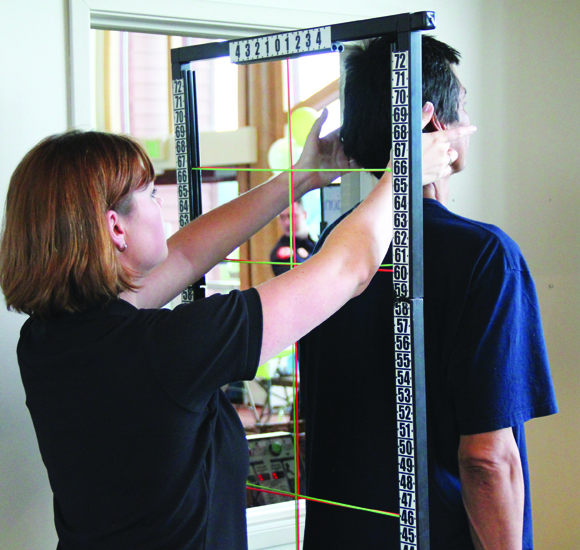
Representatives from Health First Chiropractic, the Marysville branch, were on hand as well to offer a free posture analysis. Using a spinal analysis machine, the patient advocate conducted postural exams on a number of men and reviewed the results with each participant. Good posture can help you exercise more safely and achieve better general health. When you sit or stand correctly, your organs will be better aligned, which reduces indigestion and helps your lungs to function at full capacity. Your core muscles will be strengthened and your back and shoulders will feel more comfortable.
Jeff O’Larey, Meat Field Specialist for Haggen, offered a presentation to about 20 men and a few members of the Tulalip Wisdom Warriors program. Topics ranged from appropriate portion sizes especially in regards to meat, discussing the benefits of free-range food sources, sodium and nitrate counts in processed foods, and general food safety concerns. After the presentation, each participant was given a few quality, choice cuts of beef to enjoy later.
Along with the various health screenings being offered there were information booths available that ranged from alternative health care options in the local area, ways to have cleaner air in your home, and methods to change eating habits as to live a heathier lifestyle. There was a booth where we could have our grip tested, a method used for assessing joint and muscle fatigue. Another booth offered us the opportunity to have our BMI (body mass index) and body fat percentage measured. Wondered if you need to cut back on those weekend treats? Or if you need to start leading a more active lifestyle? Well if that BMI was too high and you didn’t like what your body fat percentage was, now you know the answer.
Face it, as we get older, we all need to become more aware of the inevitable health concerns that may one day affect us. The possibility of having to deal with high cholesterol, high blood pressure, diabetes, or the possibility of prostate cancer looms over us all. The only way to avoid such health concerns to heighten our awareness of these preventable conditions. Health educators empower us to be more proactive about our health by getting annual screenings, detecting issues early, as well as seeking medical treatment before a simple, treatable issue becomes life altering.
To all of the men who attended the Men’s Health Fair, Jennie Fryberg, Health Information Manager, issued the following statement, “First, I want to thank the Tulalip Tribes for sponsoring our Tulalip Health Fairs this year. Prevention, prevention, prevention. Also, I want to thank all the men that came out today for the annual men’s health fair. Way to come and take care of your health. I hope you all enjoyed today’s fair.”
Contact Micheal Rios, mrios@tulaliptribes-nsn.gov
Tobacco-Free Together
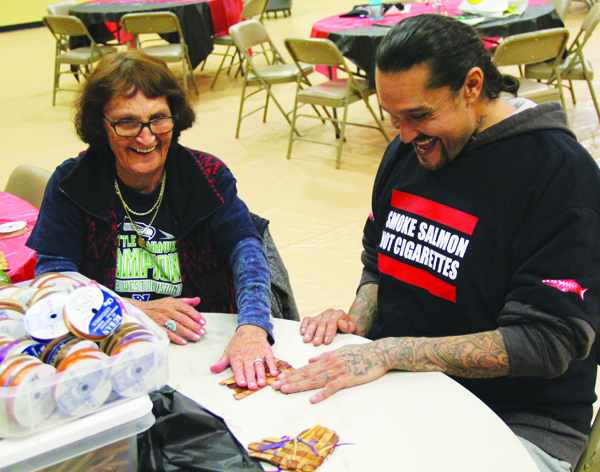
By Micheal Rios, Tulalip News
Smoke Salmon, Not Cigarettes. That was the theme at this year’s first ever Tobacco-Free Together Day, held on Wednesday, October 28 at Greg Williams Court from 11:00 a.m. to 2:00 p.m. Planned by the Adult and Youth Smoking Cessation programs, the event brought members of the Tulalip community together with the goal of getting as many people as possible to quit smoking for the day, begin thinking about quitting, and celebrating a journey to becoming smoke-free together.
Some quick, sobering facts. Although Native Americans make up approximately 1% of the United States population, we have the highest smoking rates of any racial/ethnic group in the United States. Two out of every five Native Americans will die from tobacco-related diseases if the current smoking rate of 40.8% persist. Currently, there is no proven, effective culturally-tailored smoking cessation program designed specifically for the Native American population.
Fortunately, there are dedicated folks within Tulalip’s Smoking Cessation programs who are committed to creating culturally-tailored stop-smoking events and strategies to help combat cigarette smoking, the number one cause of preventable death among Native Americans.
“Attendees shared a salmon lunch, learned some interesting facts about nicotine, and received a goodie bag including smoked salmon, facts about tobacco, and shirts sporting our motto for the event, ‘smoke salmon, not cigarettes’,” said Ashley Tiedman, Tobacco Cessation Program Coordinator. “It was a very positive day full of good vibes! On top of the delicious lunch, we had the Rediscovery Program from Hibulb Cultural Center on hand teaching attendees cedar weaving. Also, Taylor Henry taught beading as a way to use cultural activities to cope with and get through nicotine cravings.
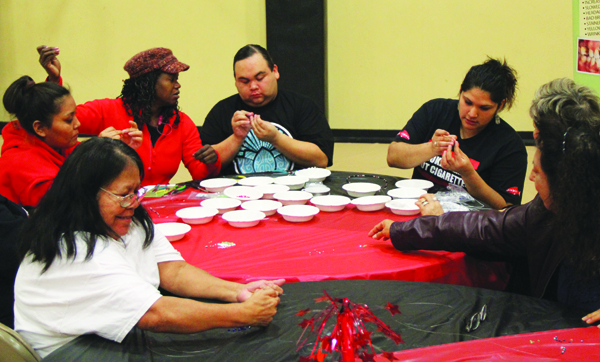
“It was a great start for an event we plan to have annually. A total of 120 people attended. Of those, about 30 people were thinking about quitting smoking, currently quitting, or committed to quit for the day.
“I really look forward to how this event will grow,” continued Ashley. “Tobacco-Free Together Day is a day for the whole community, whether you smoke or not, to come together and celebrate being smoke-free. The goal of this event was to help raise awareness on the dangers of smoking while also being a fun and relaxing environment where people wouldn’t feel pressured to quit, but be able to walk away with valuable resources rooted in culture, so when they’re ready to quit they’ll know what is available to help them on their journey to becoming smoke-free.”
Ready to quit smoking? Tulalip Tribes Stop Smoking Program can be reached at (360) 716-5719. Please call for supplies and support in your journey to become smoke-free.
Contact Micheal Rios at mrios@tulaliptribes-nsn.gov
Native Voices: Native Peoples’ Concepts of Health and Illness
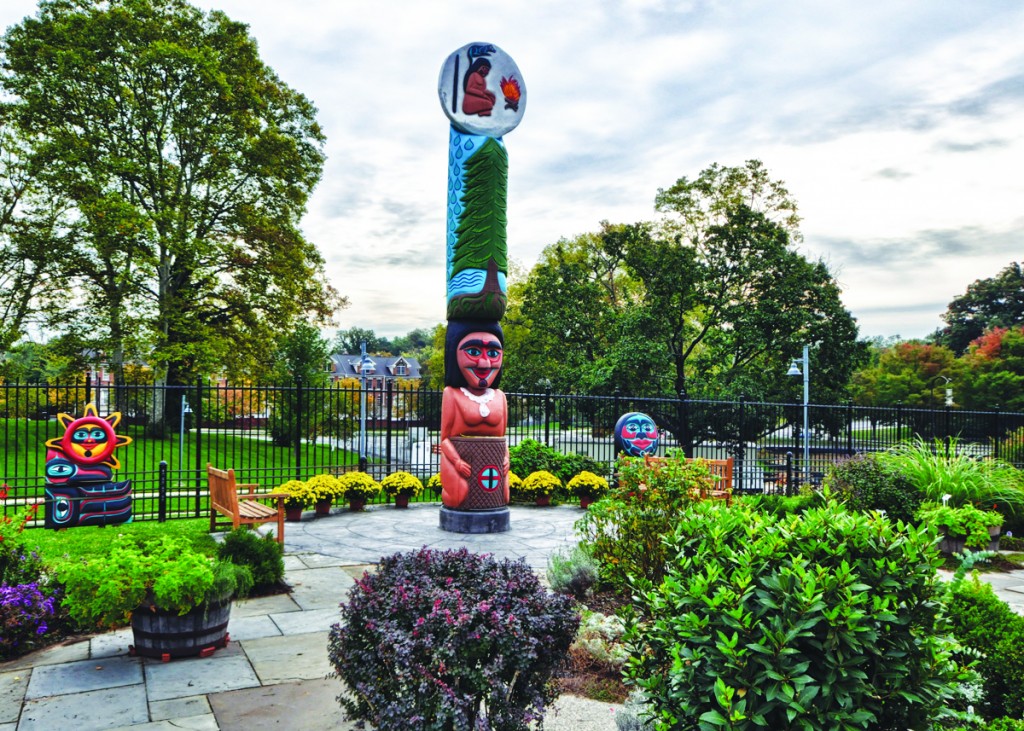
By Micheal Rios, Tulalip News
There was a new and very exciting exhibition recently on display at the University of Washington, from October 6 – 27. Brought to the public by the National Library of Medicine and the National Institutes of Health, the exhibition was titled Native Voices: Native Peoples’ Concepts of Health and Illness.
Due to the limited exhibition time and distance to the UW campus, we here at the syəcəb have decided to bring the exhibition to you by way of a series. Over the next several issues we will explore the interconnectedness of wellness, illness, and cultural life for Native Americans, Alaska Natives, and Native Hawaiians.
Readers will discover how Native concepts of health and illness are closely tied to the concepts of community, spirit, and the land.
As we well know, Native concepts of health and illness have sustained diverse peoples since our ancestral times. This traveling exhibition that was displayed at the UW was used as a learning tool for up and coming medical school students as a way to showcase how revival and pride in Native ideas among a new generation of medical practitioners can help sustain them in the twenty-first century.
Last week, we provided our readers with the in-depth introduction for Native Voices; this week, we will explore the connectedness of Native peoples and Nature.
Nature: A sources of strength and healing
A deep respect and connection with nature is common among all Native peoples. Unlike modern society, which erects barriers between itself and the natural world, Native cultures derive strength and healing from the land and water. Individual wellness cannot be achieved when the connection to nature is missing or contaminated.
“The environment shapes the culture of the people,” explains Roger Fernandez of the Lower Elwha Band of the Klallam Indians. “Anywhere in the world, the environment they live in shapes that culture. You have the mountain people, and the lake people, and ocean people, and island people. That environment shapes the culture, and then the stories explain the people and their relationship with that environment, and the art becomes to me a visual manifestation of that whole process that the art incorporates the environment, it incorporates the culture, and it incorporates the stories, the understandings, and the meanings of the people.”

Healing plants
Native American, Alaska Native and Native Hawaiian healers all have a long history of using indigenous plants for a wide variety of medicinal purposes. Medicinal plants and their applications are as diverse as the tribes who use them. Beyond the medicinal benefits, indigenous plants were a staple of Native peoples’ diet before European contact. Today, indigenous plants are central to efforts to improve dietary health for current generations.
In Hawaii, the “Waianae Diet” and “Pre-Captain Cook Diet” aim to reduce empty calories, fat, and additives and promote a healthier, more balanced diet by restoring the role of indigenous foods. Various Native tribes have similar projects emphasizing traditional foods. In this very real sense, food is medicine.
Dandelion is a generous source of Vitamins A, B, C and D and various minerals. It is also used for liver issues like hepatitis and jaundice and is a natural diuretic. All of the plant parts can be used: the root as medicine, food, or coffee substitute; the leaves as a poultice or salad; and the flowers as food or medicine.
Willow leaves are used in a poultice or bath for skin infections or irritations and the leaves can be chewed and placed on insect bites for pain relief. Willow ash can be sprinkled on severe burns or to prevent infections in cuts. Willow is used in some forms of over-the-counter aspirin. Willow aspirin compounds are organic and less volatile than their chemically made counterparts.
Aloe is used for healing burns, as a tea to detoxify the body, and as a skin moisturizer.
A totem for healing
The National Library of Medicine’s healing totem was created to promote good health, in keeping with the mission of the doctors and scientists who work there to advance our knowledge of health and medicine. Following a blessing at the historic Lummi village site of Semiahmoo, the finished totem was transported across the United States, with tribal blessings at several sites along the way. The healing totem was erected as part of a traditional Lummi blessing ceremony in from the National Library of Medicine in October 2011.
“The figures in this totem are based on stories of the Lummi Nation and the Algonquin Nation,” explains Master Carver Jewell James, a member of the House of Tears Carvers of the Lummi Nation. “At the totem base is depicted a woman with a gathering basket, symbolizing the role of women in collecting traditional herbs and medicinal plants. Above her rises the Tree of Life, with its branches reaching for the sky and its roots deep in the Earth, symbolizing how all life on Earth is related. The Tree represents the forest from which medicines are gathered. Capping the pole is Medicine Woman in the Moon, looking to the Great Spirit to reveal new knowledge.”

